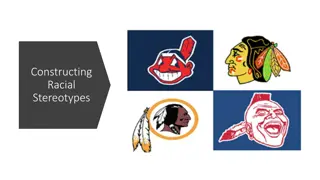Understanding Non-literal Meaning: Idioms, Metaphors, and Metonymy
The unpredictable world of non-literal meaning through idiomatic expressions, metaphors, and metonymy. Discover how these concepts shape language and thought.
3 views • 37 slides
Exploring the Two Dimensions of Meaning: Similarity and Contiguity in Language and Literature
This content delves into the dimensions of meaning, focusing on similarity and contiguity, as explored in language and literature. It discusses the significance of Saussure's paradigm and syntagm, Jakobson's theories on similarity and contiguity in discourse, and the impact of brain damage on langua
0 views • 66 slides
Figures of Speech
Explore the fascinating world of figures of speech with Dr. Somali Saha as we delve into the seven classes of figures. From simile to metonymy, antithesis to personification, you will discover the various ways language can be crafted to create engaging and impactful communication.
0 views • 10 slides
Understanding Poetry Analysis: Scansion, Refrain, and Literary Devices
Delve into the world of poetry analysis with a focus on scansion, refrain, and literary devices such as apostrophe, abecedarian, metonymy, and synecdoche. Explore the nuances of metrical patterns, rhyme schemes, and organizational structures in poems, along with repeated refrains and figures of spee
0 views • 10 slides
Understanding Racial Stereotypes: Deconstruction and Impact
This content explores the creation and perpetuation of racial stereotypes, focusing on Indigenous American people as examples. It delves into metonymy, caricature, name-calling, them-and-us comparisons, exoticization, and the use of non-standard English. Through visual examples and explanations, it
3 views • 9 slides
Understanding Semantics and Pragmatics: Exploring Extensions of Meaning
This chapter delves into the realms of semantics and pragmatics, exploring literal and non-literal meanings, naturalized, established, and nonce extensions, as well as metaphor and metonymy. It discusses how certain meanings become entrenched in language, either as naturalized or established extensi
0 views • 18 slides
Understanding Lexical and Grammatical Expressive Means in Stylistic Devices
The lecture discusses various lexical and grammatical expressive means in stylistic devices, such as metaphor, personification, allusion, metonymy, synecdoche, irony, epithet, and oxymoron. These tools allow for creative and vivid expressions in language by playing with different meanings and associ
0 views • 22 slides
Exploring Stylistic Devices: Metaphor, Metonymy, Repetition, and More
Delve into the theory of stylistic devices proposed by V.V. Gurevich, covering figures of speech, structural devices, and phonetic expressive means. Discover examples of metaphors, metonymy, repetition techniques like anaphora and climax, along with their impact on language usage and expression.
0 views • 22 slides
Exploring Historical Semantics: Evolution of Meaning in Words
Historical semantics delves into the evolution of word meanings, tracing changes like narrowing, widening, metaphor, metonymy, synecdoche, hyperbole, and more. It examines reasons for semantic shifts, such as taboo, new needs, and sound laws, aiming to establish linguistic connections and reconstruc
0 views • 21 slides
Understanding Figurative Language Techniques in AP Literature Poetry
Exploring the purpose of figurative language in poetry adds depth and emotion to the text. Learn about key techniques like symbolism, metaphor, simile, personification, and allusion. Discover advanced concepts such as metonymy, synecdoche, allusion, synesthesia, hyperbole, and more. Delve into the p
0 views • 6 slides
Understanding Qualia Structure in GL Theory for Semantic Problem-solving
Explore the Qualia structure in GL theory for semantic problem-solving, focusing on issues like polysemy and metonymy. Discover how label propagation aids in qualia classification, with examples ranging from noun compounds to verb-object relationships. Uncover the complexity of Qualia binding and it
0 views • 26 slides










